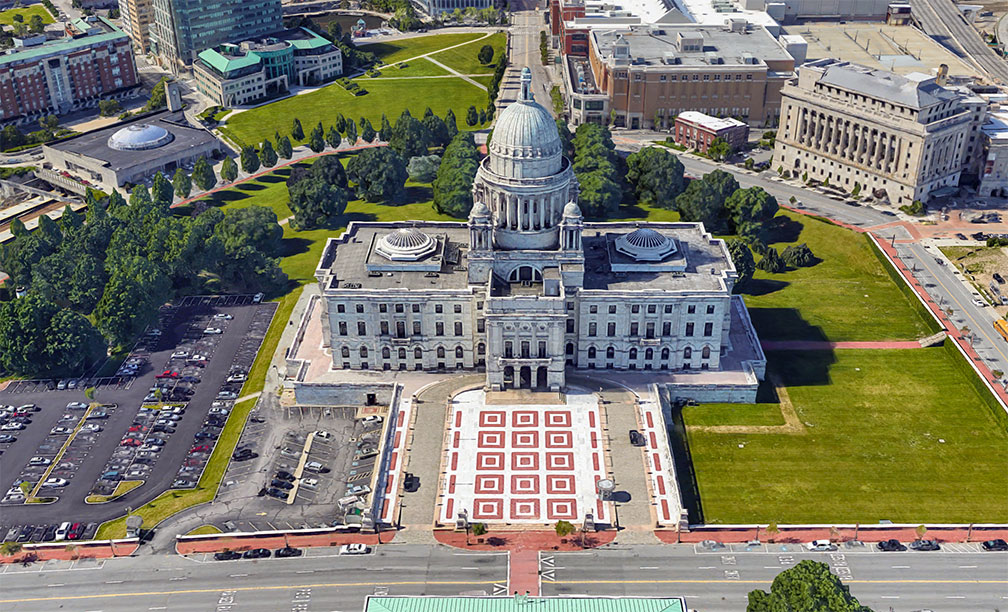More about Rhode Island State
Short History
 Topographic Regions Map of Rhode Island. (click map to enlarge)
Topographic Regions Map of Rhode Island. (click map to enlarge)
The Colony of Rhode Island and Providence Plantations was created in the 17th century. English colonists first settled on present-day Aquidneck Island (Rhode Island) in the 1630s.
Nearly one and a half century later, in 1776, the colony declared independence from the British Crown as the first of the thirteen original American colonies. However, it was the last to sign the Constitution, so it became the 13th constituent US state.
Area
Rhode Island covers a total
area of 3,999 km² (1,544 sq mi),
[2] a third of which is water (1,324 km² or 511 square miles).
This feature might be the reason for its official nickname "The Ocean State," the other one is 'Little Rhody.' It is the smallest US state by area. Compared with other US states, Rhode Island would fit into New Jersey seven times and into Texas 222 times.
Rhode Island Geography
Rhode Island consists of five counties, four major islands, and one estuary (Narragansett Bay).
The five counties are (ordered by their population (in 2019)) Providence County (637,000), Kent County (164,300), Washington County (125,500), Newport County (82,000), and Bristol County (48,500).
The geography of Rhode Island consists of two principal regions: the southern and eastern Coastal Lowlands and the Eastern New England Upland (ENEU), also known as the Eastern Highlands, in the northwest.
More than half of the state is covered with forests.



